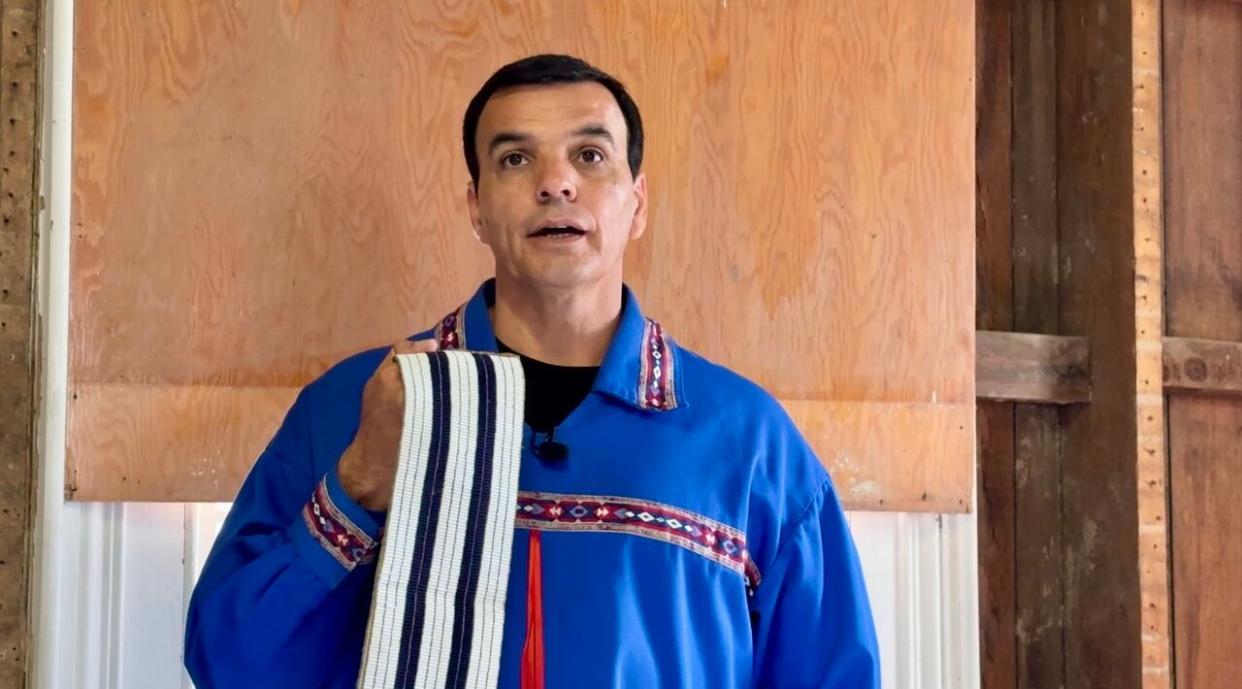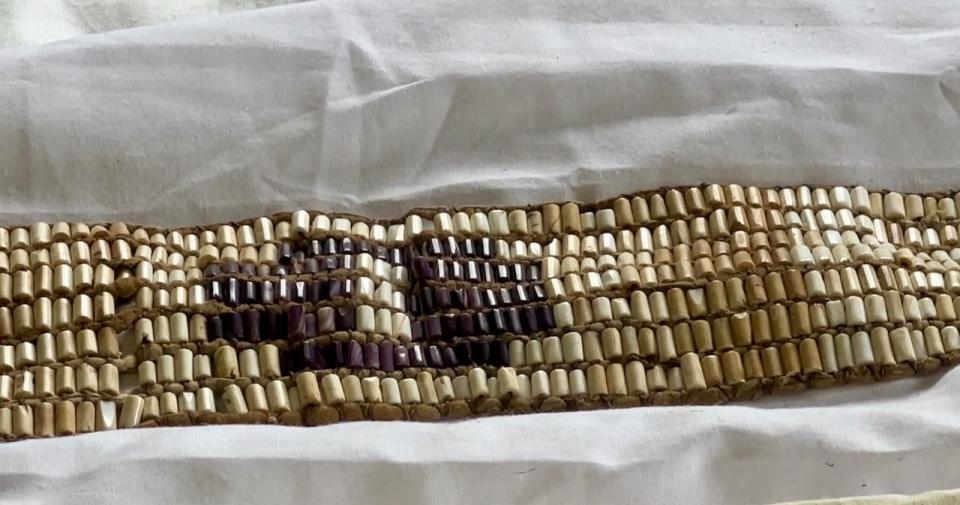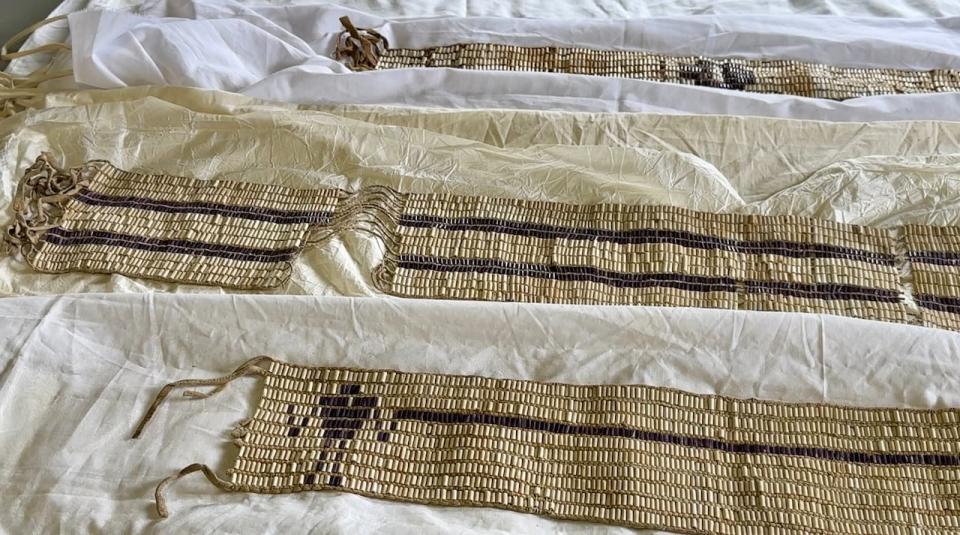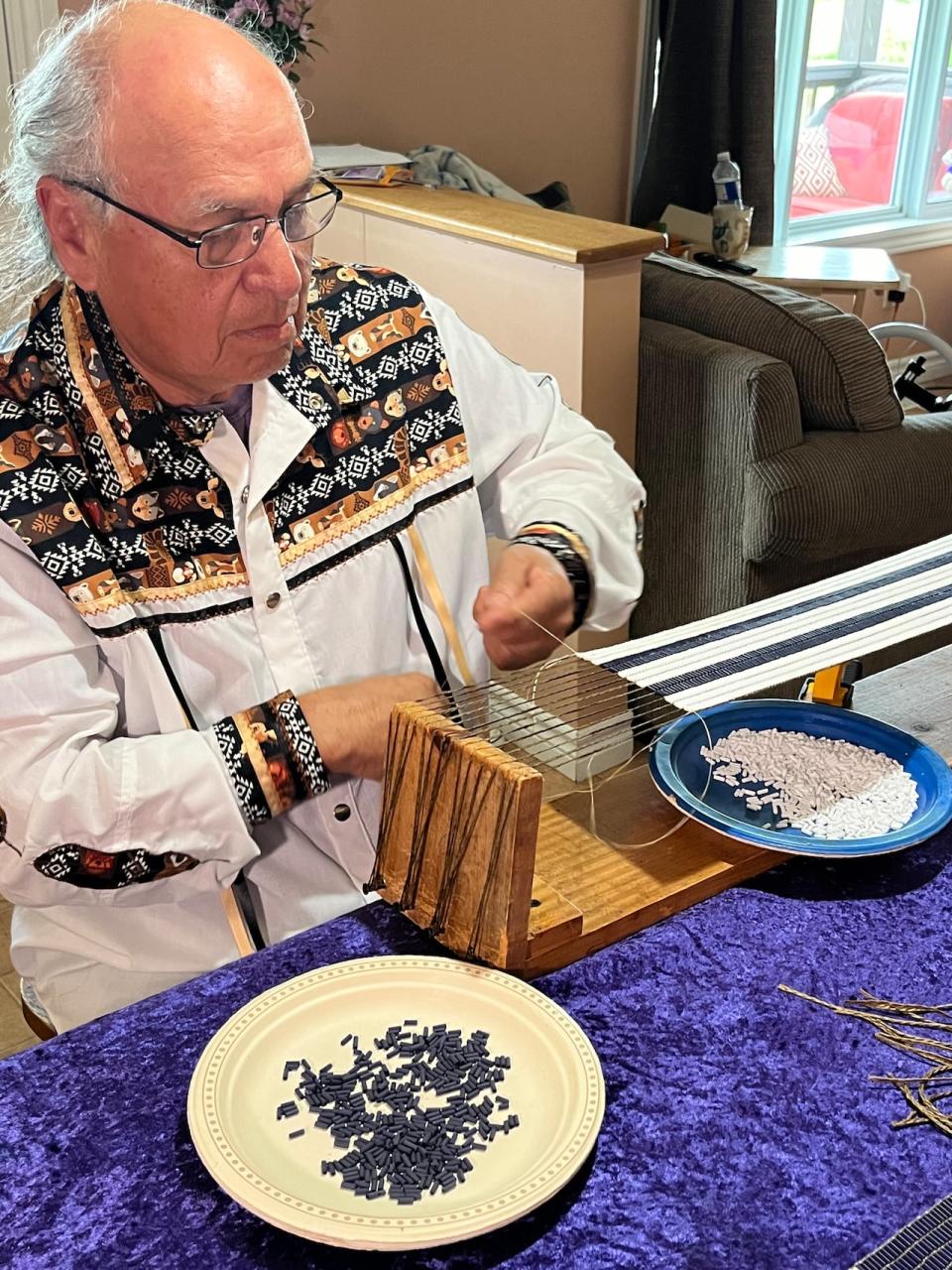North America's 1st treaty agreements were recorded in wampum belts

June is National Indigenous History Month. To celebrate our accomplishments CBC Indigenous is sharing stories highlighting First Nations, Inuit and Métis trailblazers in law, medicine, science, sports — and beyond.
The One Bowl wampum is the first known pre-contact treaty agreement in North America and is referred to in many land acknowledgements in Ontario.
Wampum belts are woven from tubular beads made of quahog shells, with patterns that serve as mnemonic devices, recording history, traditions, laws, and diplomacy. The One Bowl, Two Row and Silver Covenant Chain wampums are still considered to be prevailing law today by the Haudenosaunee, and were the basis for every subsequent treaty with settler governments.
Leroy Hill, Cayuga sub-chief and faithkeeper from Six Nations of the Grand River and Haudenosaunee Confederacy Chiefs Council secretary, said it's unknown how old the One Bowl wampum is, but that it likely pre-dates European contact by at least 1,000 years, based on how far its concepts spread in eastern North America.
He said historians place too much emphasis on the dates of these wampums — often to challenge Indigenous claims to North America — rather than their meaning.
The One Bowl wampum, Hill said, directs how to care for the Earth and maintain healthy relationships with other nations with whom they share the land. He said this was the concept that was embraced when the first European settlers arrived in North America.
"Our ancestors chose to focus on the message of it, which is trying to conduct [relations] with good mind and peace and friendship, and that's just what these treaties are about," he said.

The One Bowl wampum directed how to care for the Earth while maintaining a healthy relationship with other nations. (Candace Maracle/CBC)
When settlers arrived, they tied a rope from their ship to the land of the Haudenosaunee. That link is reflected in the 1613 Friendship Belt or Silver Covenant Chain. The chain of silver symbolizes the treaty is unbreakable, Hill said, but that it would tarnish from time to time and need to be polished, or have its terms revisited. If either party needed assistance, they could shake the chain to have their needs addressed.
Two Row wampum
Its counterpart, the Two Row wampum between the Haudenosaunee and the Dutch, acknowledged the differences in culture. The two rows symbolize two boats travelling side by side.
"You have your religious beliefs and your ways of worship and connecting with the greater power, so you keep that in the ship you arrived in and we'll keep ours in our canoe, our languages and traditions and ceremonies, beliefs, the things that make us who we are as Haudenosaunee," said Hill.
Jon Parmenter, an associate professor of history at Cornell University in Ithaca, N.Y., said that diplomacy is why Canada and the United States exist today.
"It was those negotiations that facilitated the survival of Europeans here in the first place. Without that, there is no Canada, no United States," he said.

The One Bowl wampum (top) is one of the first treaty agreements in North America, made between Indigenous nations in the era before contact with Europeans. The Two Row wampum (middle) and its counterpart, the Silver Covenant Chain (bottom) are treaties between the Dutch and Haudenosaunee from 1613. (Candace Maracle/CBC)
His research about the Two Row wampum was used in a recent Quebec court case where two Kanien'kehá:ka (Mohawk) men invoked the Covenant Chain to support their treaty right to trade tobacco.
He said it's incumbent upon historians to do a better job of engaging with Indigenous communities about their oral histories.
"The documentary record we have is really, really flawed," Parmenter said.
"For a long time that has really worked against Indigenous people, because it has not been able to support many of the rights and associations with particular places … [that] they assert and claim as valid on the basis of their own understanding of past agreements that they have preserved orally."
Teachings continue
Ken Maracle, Cayuga nation from Six Nations of the Grand River has been weaving wampum belts for over 40 years and said he feels the presence of his ancestors as he's making them.
Maracle said he learned the teachings of the wampums from the elders and knowledge keepers who came before him. The symbols or patterns used in the belts speak the history they recorded.

Ken Maracle has been weaving wampum belts for 43 years. (Candace Maracle/CBC)
"It's almost like these have words," he said.
"They'll take five speakers and talk about that same belt and in general, everything will be set in the same way."
"Our white brother missed out a lot by not hearing exactly what we were saying: that [wampum agreements] are going to protect our unborn faces and unborn faces will live beside you forever As long as the sun shines, as long as the grass grows green and as long as that river is in front of you moving and as long as the earth is in motion."

 Yahoo News
Yahoo News 
